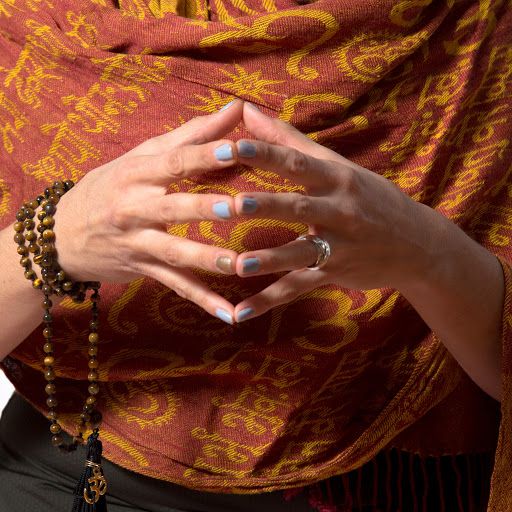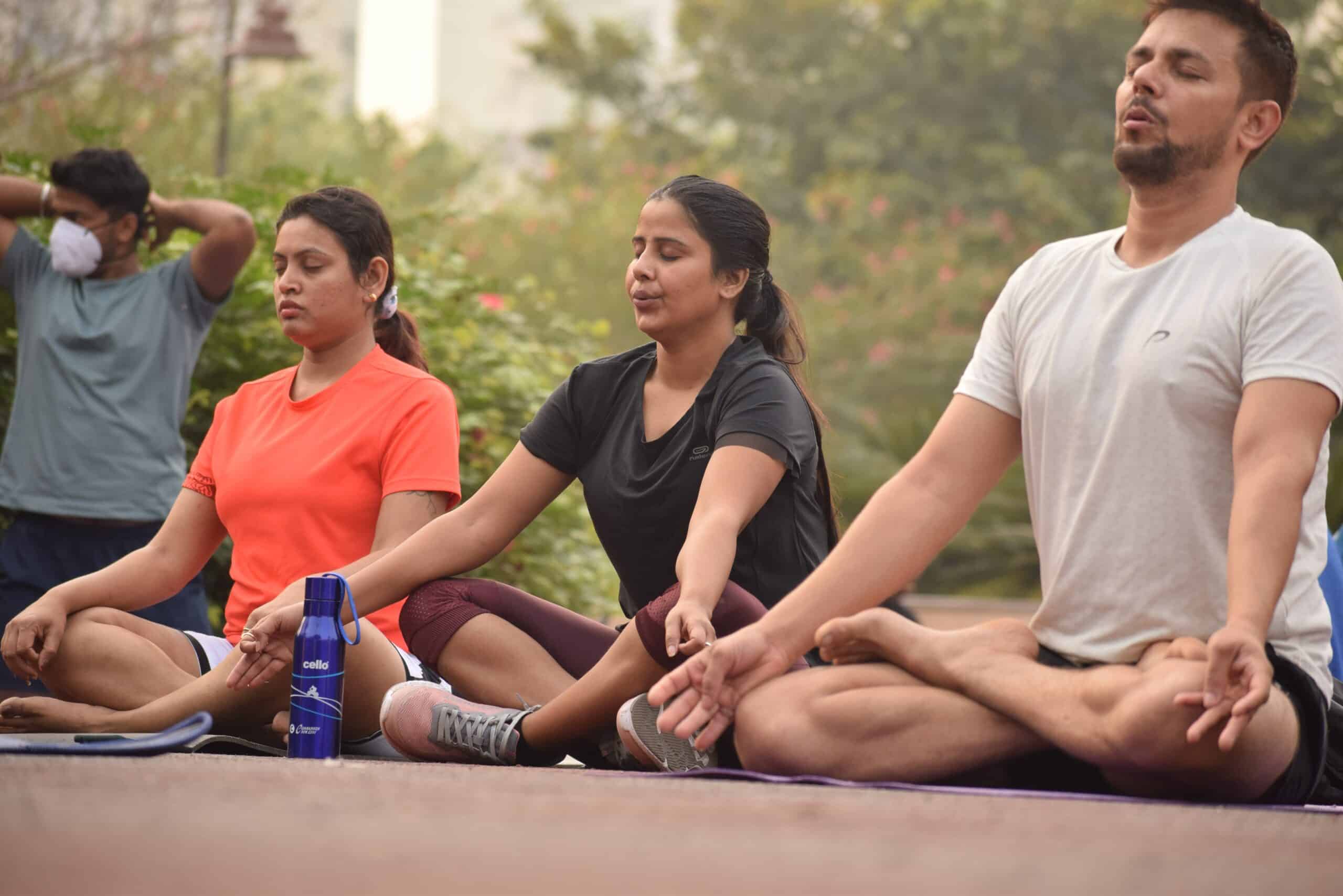Balasana, also known as Child’s Pose, is a deceptively simple yet powerful posture in the yoga universe. Often introduced as a foundational pose for beginners, Balasana transcends experience levels, offering a much-needed refuge for yogis of all stripes.
This posture acts as a bridge between active asanas (poses) and moments of quiet contemplation, fostering a sense of relaxation and rejuvenation.
Balasana is derived from the Sanskrit words ‘bala’ meaning ‘child’ and ‘asana’ meaning ‘position’. It allows practitioners to reconnect with the simplicity and ease of childhood while nourishing the body, mind, and soul. In this post, we will look at the core of Balasana, including its technique, variations, and the significant healing benefits it provides.
Table of Contents
ToggleOrigin and Symbolism of Balasana
Balasana is firmly founded in childhood symbolism and its inherent attributes, which include innocence, submission, and a feeling of security. Just like a toddler finds comfort and shelter in its parents’ arms, Balasana practitioners find consolation and grounding by surrendering their bodies to the Earth.
The pose represents a return to the womb, a secure and nurturing environment where one may relax, recover, and find inner peace. Balasana folds the body inward, creating a safe cocoon that enables profound reflection and release.
A step-by-step guide
- Begin from your knees: Kneel on a yoga mat, toes together, knees hip-width apart. If sitting on your heels causes discomfort, lay a folded blanket or yoga block between your buttocks and heels to provide support.
- Sink back toward your heels. Inhale and stretch your spine. As you exhale, gently bend at the hips and lower your body between your legs. Rest your forehead on the mat, and let your tummy relax towards your thighs.
- Finding Arm Comfort: There are two main arm postures in Balasana. Extend your arms upward, palms facing down, to stretch your shoulders and upper back. Alternatively, place your arms beside your body, palms facing upward. Experiment to see what is most comfortable for your body.
- Breathing and Relaxation: Once you’re comfortable, shut your eyes and concentrate on your breath. Take slow, deep breaths, inhaling through your nose and expelling through your mouth. Feel the rise and fall of your chest and belly as you breathe.
- Hold and Release: Maintain the child’s pose for as long as it is comfortable. A normal hold time ranges from 30 seconds to several minutes. When you’re ready to go, inhale and softly push your hands into the mat to raise your body back to a kneeling posture.
Variations and Modifications
While Balasana is naturally soft and loving, there are a few tweaks and modifications that may be made to customize the posture to specific needs and preferences:
- stretched Child’s Pose: In this form, the arms are stretched forward and the palms rest on the mat, resulting in a deeper stretch over the spine and shoulders.
- Puppy Pose (Uttana Shishosana) is similar to Balasana, but with the hips elevated slightly higher than the heels and the arms stretched forward to lengthen the spine and expand the chest.
- Supported child’s posture: For those with limited flexibility or mobility, props like bolsters, blankets, or yoga blocks may help give support and make the posture more accessible.
- Wide-Knee Child’s Pose: Instead of keeping the knees together, spread them wide apart to allow the body to fall between the thighs, resulting in a deeper stretch to the hips and groin.
Benefits of Balasana:
The advantages of Balasana go beyond the physical domain, covering the mental, emotional, and spiritual components of well-being.
- Balasana gently extends the spine, hips, and thighs, alleviating tension and exhaustion caused by lengthy hours of sitting or standing. The forward folding movement also relaxes the neural system, which reduces tension and anxiety.
- Improves Digestion: The gentle compression of the belly in Balasana massages the internal organs, increasing digestion and relieving bloating and indigestion.
- Promotes Relaxation and Sleep: Practicing Balasana before bedtime may produce deep relaxation and prepare the body and mind for comfortable sleep. The pose’s relaxing influence may aid with sleeplessness and generate a feeling of calm.
- Balasana promotes mindfulness and self-awareness by directing attention within and surrendering to the present moment. It encourages practitioners to notice their thoughts and emotions without judgment, resulting in a feeling of inner calm and clarity.
- Encourages Surrender and Letting Go: Balasana emphasizes the necessity of submitting to life’s natural rhythms and letting go of expectations and attachments. It reminds us that genuine strength comes from vulnerability and acceptance, which allow us to connect more deeply with ourselves and the world around us.
Learn More: Benefits of Balasana
Cautions and Contraindications
Balasana is typically safe for most people; however, there are several considerations and contraindications to consider:
- If you have a knee injury or are experiencing knee or ankle pain, avoid doing Balasana. Instead, choose a sitting meditation position or a reclining stance that supports the lower body.
- Pregnant women should use Balasana with care, particularly in the latter stages of pregnancy. To support the belly, use supports like bolsters or blankets rather than squeezing it.
- If you have a recent or chronic hip, spine, or shoulder injury, speak with a competent yoga teacher or healthcare practitioner before doing Balasana to confirm that it is appropriate for your situation.
- Individuals with high blood pressure or vertigo should use care while doing Balasana, since the forward folding movement may produce dizziness or pain. Practice the posture attentively, concentrating on steady breathing and alignment.
Final Thought
In the midst of contemporary life’s stress, finding moments of calm and serenity is critical to preserving balance and wellbeing. Balasana, also known as Child’s Pose, provides a haven of peace where practitioners may escape the stresses of the outside world and reconnect with the wisdom and purity of childhood.
Balasana allows us to relieve tension, build awareness, and enjoy our inner calm through gentle surrender and reflection. Whether performed as a stand-alone pose or as part of a broader yoga sequence, Balasana is a powerful reminder of the healing power of presence and the deep interconnection of body, mind, and spirit.





No Comments